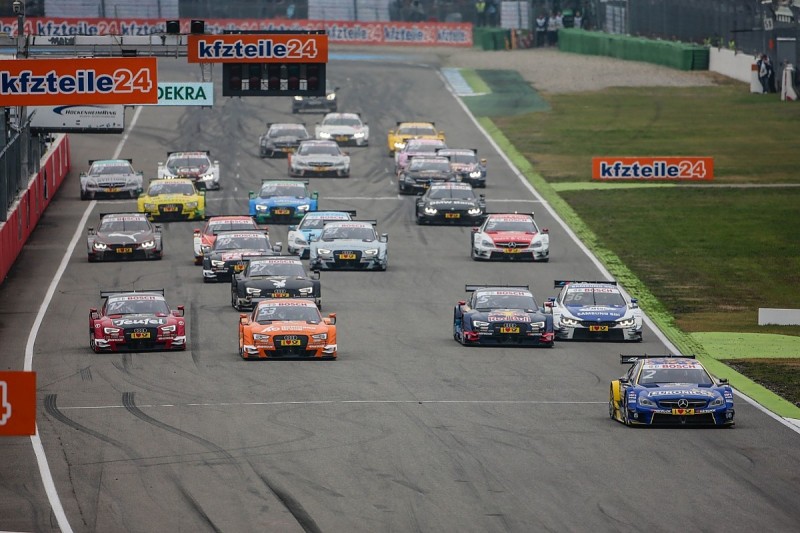DTM details new performance-weight system for 2016 season
The DTM has outlined how its revamped performance-weight system will work in 2016

A move away from the controversial 2015 system was announced last week, along with a performance concession for BMW and a change to DRS usage.
Performance weights this year will be based on qualifying results, and what has now been revealed as the theoretical best lap set by each brand's top driver during the 20-minute session.
The driver from each brand with the fastest three combined sector times - rather than the single lap that determines their place on the grid - will be the reference point.
Blocks of weight will then be added and removed according to six different scenarios, based on the percentage difference between the brands.
The weights will apply for that race and the next qualifying session - be it at the same circuit or the next event - and a maximum weight of 1140kg still applies, along with a minimum of 1105kg for Audi and Mercedes and 1097.5kg for BMW.
The scenarios are as follows, based on theoretical best laptimes.
All three brands have times within 0.1 per cent of best.
No weight is added or removed.
Two brands have times within 0.1 per cent of the best, third brand is between 0.1 per cent and 0.2 per cent slower.
Drivers from top two brands gain 2.5kg each, drivers from third brand lose 2.5kg each.
Two brands have times within 0.1 per cent of the best, third brand is more than 0.2 per cent slower.
Drivers from top two brands gain 5kg each, drivers from third brand lose 5kg each.
Second and third brands are between 0.1 per cent and 0.2 per cent slower than the best.
Drivers from top brand gain 2.5kg each, drivers from bottom two brands lose 2.5kg each.
Second brand is between 0.1 per cent and 0.2 per cent of the best, third is more than 0.2 per cent slower.
Drivers from top brand gain 5kg each, drivers from middle brand are unchanged, drivers from bottom brand lose 5kg each.
Second and third brands are more than 0.2 per cent slower than the best.
Drivers from the top brand gain 5kg each, drivers from bottom two brands lose 5kg each.
IN PRACTICE...
Here is how the weights would have changed for the final qualifying session of 2015 at Hockenheim, albeit without sector times to determine the theoretical best laps.
Gary Paffett qualified on pole for Mercedes with a time of 1m32.645s.
A time of 1m32.738s is 0.1 per cent slower, a time of 1m32.830s is 0.2 per cent slower.
The top Audi qualifier - Jamie Green with 1m32.683s - is within 0.1 per cent of the Mercedes time, and the top BMW - Maxime Martin with 1m32.826s - is between 0.1 and 0.2 per cent.
The second scenario listed above would then apply, with Mercedes and Audi drivers adding 2.5kg to their existing allocations, BMW drivers removing 2.5kg.

Be part of the Autosport community
Join the conversationShare Or Save This Story
Subscribe and access Autosport.com with your ad-blocker.
From Formula 1 to MotoGP we report straight from the paddock because we love our sport, just like you. In order to keep delivering our expert journalism, our website uses advertising. Still, we want to give you the opportunity to enjoy an ad-free and tracker-free website and to continue using your adblocker.














Top Comments